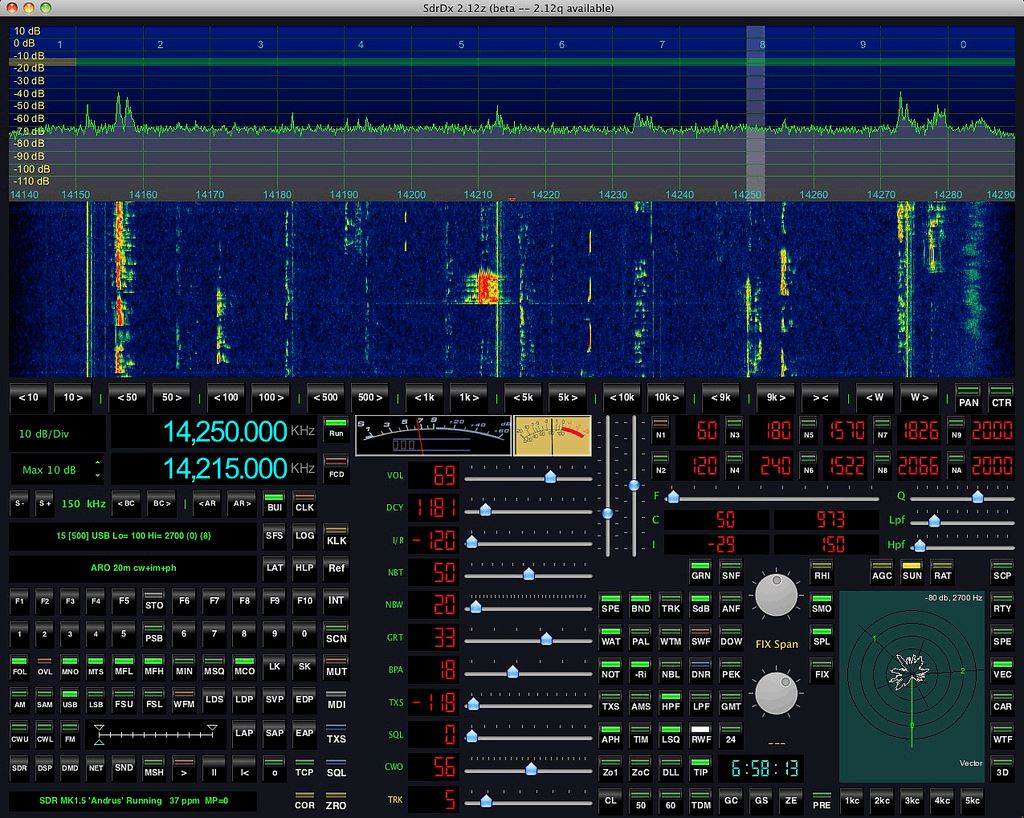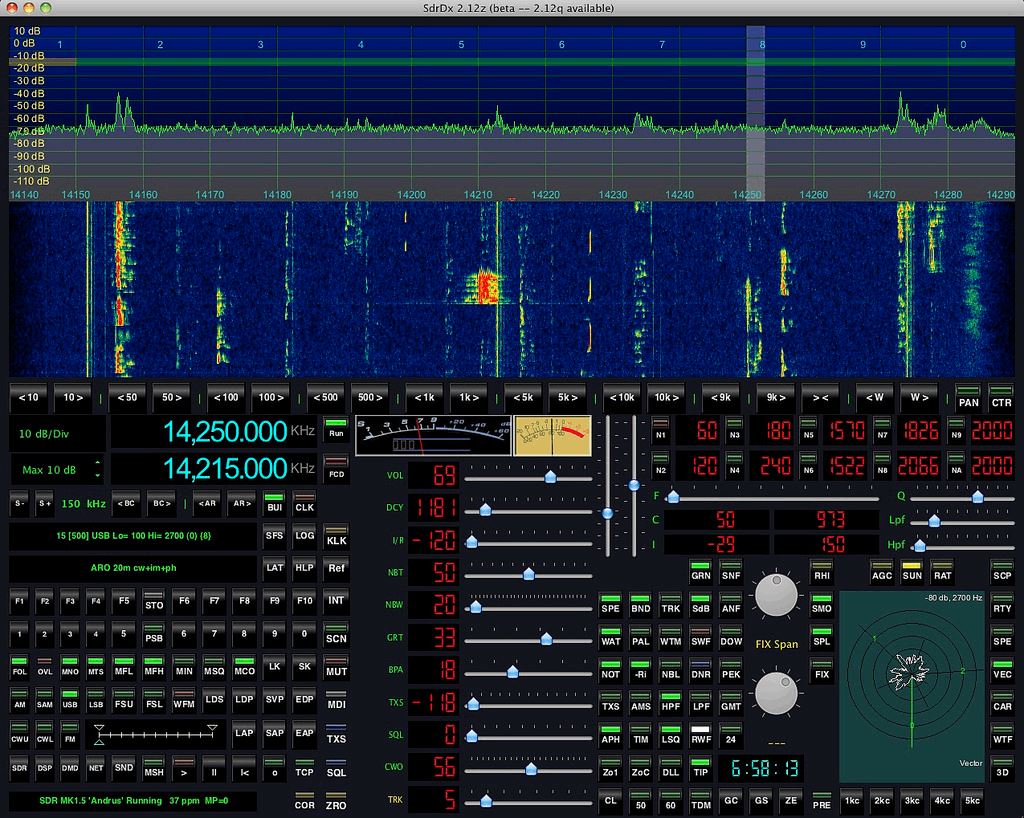The invisible world of radio waves, once accessible only through dedicated, often bulky, and expensive hardware, has undergone a profound transformation. Thanks to Software Defined Radio (SDR), a simple USB dongle and powerful software can turn your Mac into a versatile radio receiver, spectrum analyzer, and even a transmitter. This revolution has democratized access to everything from local broadcast FM and emergency services to satellite signals, aircraft communications, and obscure scientific data.
For Mac users, the journey into SDR is particularly exciting. While Windows traditionally held a stronghold in radio applications, the robust Unix-like foundation of macOS, coupled with a thriving open-source community, has brought a wealth of sophisticated and user-friendly SDR software to Apple’s platform. This article will dive deep into the world of SDR software for Mac, exploring the essential tools, advanced applications, installation nuances, and tips to help you effectively navigate the electromagnetic spectrum from your desktop.
The Foundation: What You Need Before Software
Before we delve into the digital realm of software, it’s crucial to understand the physical components that enable SDR on your Mac.
-
SDR Hardware (The Dongle): This is the bridge between the analog radio waves and your computer’s digital processing power.
- RTL-SDR Dongles: These are the most common and affordable entry point. Based on DVB-T TV tuners, they can typically receive frequencies from around 25 MHz to 1.7 GHz. Perfect for beginners.
- HackRF One: A significant step up, offering full duplex (transmit and receive) capabilities from 1 MHz to 6 GHz. It’s more expensive but unlocks a vast array of advanced projects, including signal emulation and protocol analysis.
- LimeSDR / BladeRF: Professional-grade SDRs that offer even wider frequency ranges, higher sample rates, and greater flexibility for serious researchers and developers. These are considerably more costly.
- Airspy: Known for its high performance and sensitivity, often preferred for demanding reception tasks within its frequency range (typically 24 MHz – 1.8 GHz).
-
Antenna: The quality and type of your antenna are paramount. A basic whip antenna comes with most dongles, but specialized antennas for specific frequency ranges (e.g., a discone for wideband, a Yagi for directional, a dipole for specific bands) will dramatically improve performance.
-
USB Port: While most SDRs are USB 2.0 compatible, using a high-quality USB 3.0 port can sometimes provide more stable data transfer, especially with higher sample rates.
Once you have your hardware, the real magic begins with the software.
Essential SDR Software for Mac: Your Gateway to the Airwaves
For Mac users, several applications stand out for their functionality, ease of use, and robust support.
1. GQRX: The User-Friendly Workhorse
GQRX is often the first stop for Mac users entering the SDR world, and for good reason. It’s a powerful yet incredibly intuitive graphical user interface (GUI) for various SDR devices, including RTL-SDR, HackRF, Airspy, and more.
-
Key Features:
- Spectrum Analyzer and Waterfall Display: Provides a real-time visual representation of the radio spectrum, allowing you to easily spot signals and observe their behavior over time.
- Multiple Demodulators: Supports AM, FM (narrowband and wideband), SSB (LSB, USB), and CW (Morse Code), covering a vast range of radio communications.
- Recording and Playback: Capture raw IQ (In-phase and Quadrature) data or demodulated audio for later analysis.
- Frequency Management: Easy tuning, memory slots for favorite frequencies, and customizable frequency ranges.
- Cross-Platform: While excellent on Mac, it’s also available on Linux.
-
Why it’s great for Mac: GQRX is compiled and distributed with Mac users in mind, often found in Homebrew (see Installation section). Its clean interface fits well with macOS design principles, making it a joy to use. It provides an excellent balance of features for both beginners and intermediate users.
2. CubicSDR: A Modern & Polished Alternative
CubicSDR offers a sleek, modern interface with a strong focus on usability and multi-device support. It’s often compared to GQRX, and many users find its layout and visual cues slightly more appealing.
-
Key Features:
- Intuitive User Interface: A clean, responsive design that makes exploring the spectrum a pleasant experience.
- Multi-Device Support: Seamlessly works with a wide range of SDR hardware, often detecting them automatically.
- Advanced Demodulation: Similar to GQRX, it offers comprehensive demodulation options.
- Customizable Views: Users can tailor the spectrum and waterfall displays to their preferences.
- Session Management: Save and load entire session configurations, including tuned frequencies and display settings.
-
Why it’s great for Mac: CubicSDR is also well-supported on macOS, providing a native feel. Its emphasis on a fluid user experience makes it a strong contender for anyone seeking a polished SDR application.
3. SDR++: The Performance-Oriented Newcomer
SDR++ (SDRplusplus) is a relatively newer player that has quickly gained a reputation for its exceptional performance, modern design, and growing plugin ecosystem. It’s often seen as a spiritual successor to the popular SDR# (SDRSharp) on Windows, bringing a similar level of responsiveness and feature depth to Mac.
-
Key Features:
- High Performance: Optimized for low latency and efficient CPU usage, even with high sample rates.
- Modular Architecture: Supports a wide range of plugins for extended functionality, from decoders to advanced DSP.
- Modern UI: A clean, dark-themed interface that is highly customizable.
- Comprehensive Device Support: Works with many popular SDRs, including RTL-SDR, HackRF, Airspy, and more.
- Built-in Decoders: Often includes decoders for common digital modes.
-
Why it’s great for Mac: SDR++’s focus on performance and its modern C++ codebase make it very efficient on macOS. It’s an excellent choice for users who prioritize responsiveness and a cutting-edge feature set.
Advanced & Specialized Tools: Beyond Basic Listening
For those who want to delve deeper into signal analysis, reverse engineering, or custom signal processing, Mac offers powerful specialized tools.
4. Universal Radio Hacker (URH): The Reverse Engineering Toolkit
URH is an essential tool for anyone interested in reverse engineering wireless protocols. It’s not just for listening; it’s for analyzing, manipulating, and even transmitting custom signals.
-
Key Features:
- Signal Analysis: Visualize signals, extract modulations, and identify bit patterns.
- Demodulation & Decoding: Supports various modulation schemes and helps decode unknown data streams.
- Pattern Recognition: Identify repeating patterns in captured signals, crucial for understanding protocols.
- Transmitting Capabilities: With a transmit-capable SDR (like HackRF), URH can generate and transmit custom signals, allowing you to interact with devices.
- Simulation: Create and test hypothetical signals.
-
Why it’s great for Mac: URH is Python-based and cross-platform, making it highly compatible with macOS. It leverages the Mac’s robust command-line environment and scientific libraries to provide a powerful research platform for wireless security and IoT exploration.
5. Inspectrum: Deep Signal Visualization
Inspectrum is a powerful command-line tool with a graphical interface designed for detailed offline analysis of captured IQ data. It’s not for real-time listening but for forensic examination of signals.
-
Key Features:
- High-Resolution Waterfall: Zoom into specific timeframes and frequencies with incredible detail.
- Advanced Measurements: Measure signal parameters like frequency, bandwidth, and pulse width.
- Filtering and Manipulation: Apply various filters and transformations to highlight specific signal characteristics.
- Multiple Views: Display different aspects of the signal simultaneously for comprehensive analysis.
-
Why it’s great for Mac: Inspectrum is often compiled from source or installed via Homebrew, integrating seamlessly into the Mac’s development ecosystem. It’s invaluable for anyone doing serious signal research or trying to understand complex modulation schemes.
6. GNU Radio: The Powerhouse Framework
GNU Radio is not an application in itself, but rather a free and open-source software development toolkit that provides signal processing blocks to implement software radios. It’s a complex beast, but for those who want to design their own signal processing chains, create custom decoders, or build novel SDR applications, it’s indispensable.
-
Key Features:
- Flowgraph-based Development: Use a graphical interface (GNU Radio Companion – GRC) to connect various signal processing blocks (sources, sinks, filters, modulators, demodulators) to build complex systems.
- Extensive Library: A vast collection of pre-built blocks for almost any signal processing task.
- Python Integration: Easily extendable with Python, allowing for custom logic and algorithms.
- Hardware Agnostic: Supports a multitude of SDR hardware through specific "gr-osmosdr" or vendor-specific drivers.
-
Why it’s great for Mac: While installing GNU Radio on Mac can be challenging, Homebrew simplifies the process significantly. Mac’s Unix foundation makes it a natural environment for compiling and running GNU Radio projects, empowering developers and researchers to push the boundaries of SDR.
Installation & Setup on Mac: Leveraging Homebrew
The primary tool for installing most of these SDR applications and their dependencies on macOS is Homebrew, the "missing package manager for macOS."
-
Install Homebrew: If you don’t have it already, open Terminal (Applications > Utilities > Terminal) and paste the following command:
/bin/bash -c "$(curl -fsSL https://raw.githubusercontent.com/Homebrew/install/HEAD/install.sh)"Follow the on-screen instructions.
-
Install
libusband other dependencies: Many SDR applications rely onlibusbto communicate with the USB dongles.brew install libusb rtl-sdr uhd hackrf liquid-dsp(Install specific drivers like
uhdfor USRP,hackrffor HackRF, etc., based on your hardware). -
Install SDR Applications via Homebrew:
- GQRX:
brew install gqrx - CubicSDR:
brew install cubicsdr - SDR++:
brew install sdrpp - GNU Radio: This can be a lengthy install.
brew install gnuradio(Be patient, this compiles many components.)
- GQRX:
-
Universal Radio Hacker (URH): URH is Python-based.
brew install python3 pip3 install urhThen run with
urh. -
Inspectrum:
brew install inspectrum
Important Note on Drivers: While libusb handles generic USB communication, some SDRs, especially professional ones like USRP, might require vendor-specific drivers or firmware updates. Always check your SDR hardware manufacturer’s documentation for specific setup instructions.
Tips for Mac SDR Users
- USB 3.0 Ports: While not strictly necessary for all SDRs, using a USB 3.0 port (even for a USB 2.0 dongle) can provide more stable power and data throughput, reducing dropouts.
- External Antennas: The small whip antennas included with many dongles are very basic. Investing in a proper external antenna (e.g., a discone for wideband, or a dipole cut for specific bands) will dramatically improve reception quality.
- Location, Location, Location: Antenna placement is critical. Get your antenna away from your computer, monitors, and other electronics that generate RF noise. Outdoors is ideal.
- Grounding: Proper grounding for your antenna system can reduce noise and improve safety.
- Resource Management: SDR software can be CPU-intensive, especially with high sample rates. Close unnecessary applications to free up resources.
- External Monitor: Using a second monitor for the waterfall display can greatly enhance the user experience, allowing you to keep the spectrum visible while working on other tasks.
- Community & Learning: The SDR community is vast and helpful. Explore forums (e.g., Reddit’s r/RTLSDR), YouTube channels, and dedicated websites for tutorials and project ideas.
- Legality: Be aware of local regulations regarding radio reception and especially transmission. Always operate within legal boundaries.
Conclusion: The Mac as a Portal to the Invisible
The Mac, with its powerful hardware and robust software ecosystem, is an exceptional platform for exploring the fascinating world of Software Defined Radio. From the casual listener tuning into local broadcasts with GQRX or CubicSDR, to the advanced researcher reverse engineering wireless protocols with URH or building custom systems with GNU Radio, there’s a tool for every level of interest and expertise.
The ease of installation through Homebrew, combined with the active development of cross-platform SDR applications, means that Mac users are no longer on the sidelines of the SDR revolution. So, grab your dongle, install your preferred software, and prepare to unlock the hidden symphony of the airwaves. The electromagnetic spectrum is vast and full of wonders, and your Mac is ready to be your guide.

